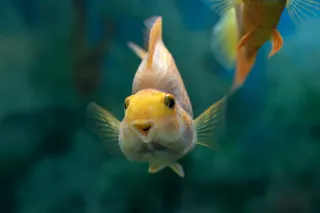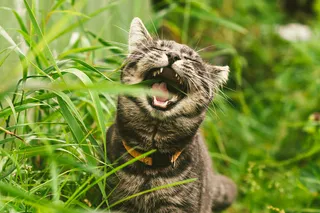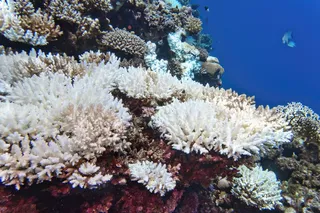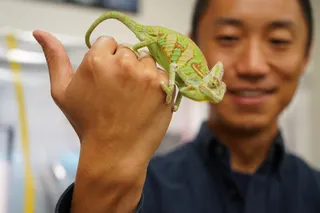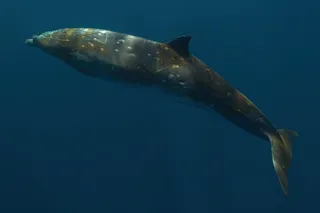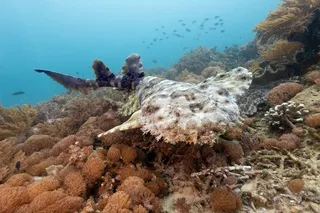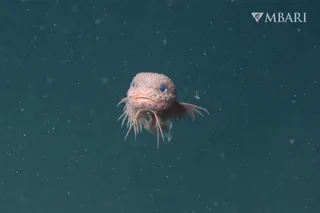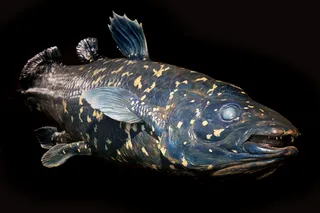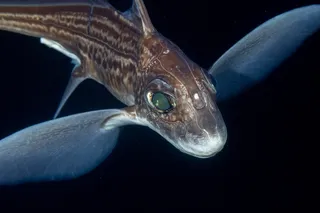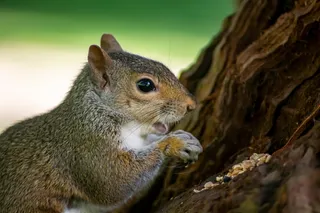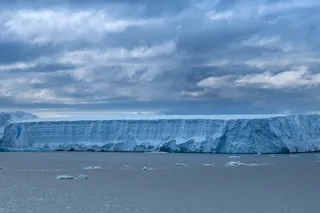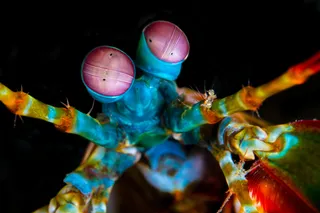A joey, or infant kangaroo, takes a breather in its mother’s pouch. Joeys nurse in their mother’s external pouch until they are about a year old.
Between my thumb and forefinger I hold a cork. Driven into that cork is a tiny pin. And glued delicately to the tip of that pin is a jawbone the size of a fingernail clipping—all that remains of a small mammal that scurried beneath ferns and fallen logs 115 million years ago in what is now Australia.
I am sitting with paleontologist Tom Rich in a laboratory at Monash University in Melbourne. Lining the walls are row upon row of wooden drawers filled with the petrified remains of turtle shells, fish bones, dinosaur toes, and the like. But this jaw—and the teeth lining it—is the star attraction. Rich is explaining the teeth’s intricate facets, referring to areas on an enlarged dental diagram.
“Here you ...



